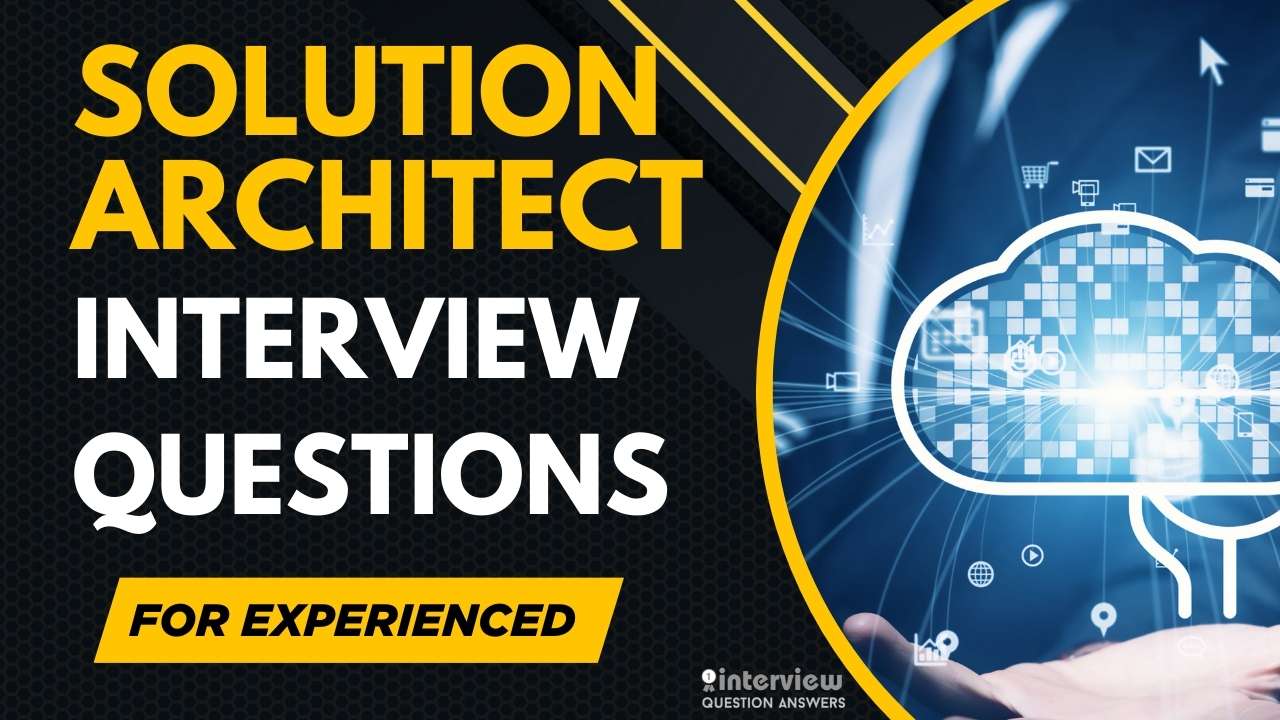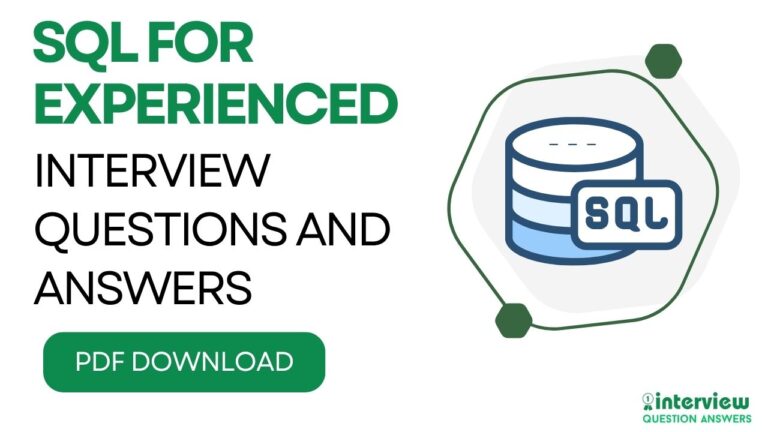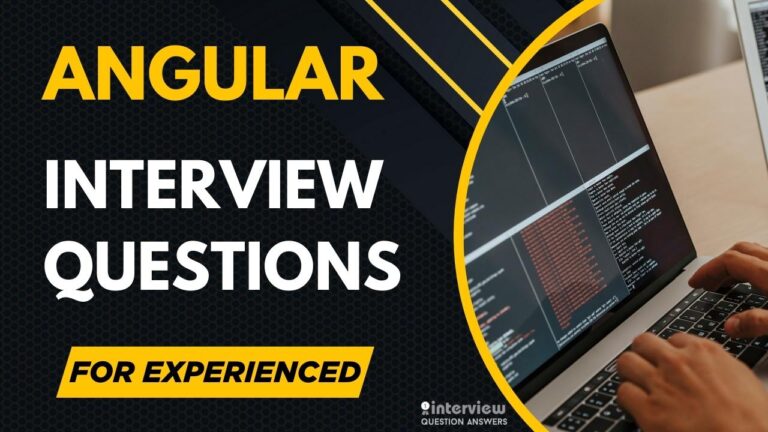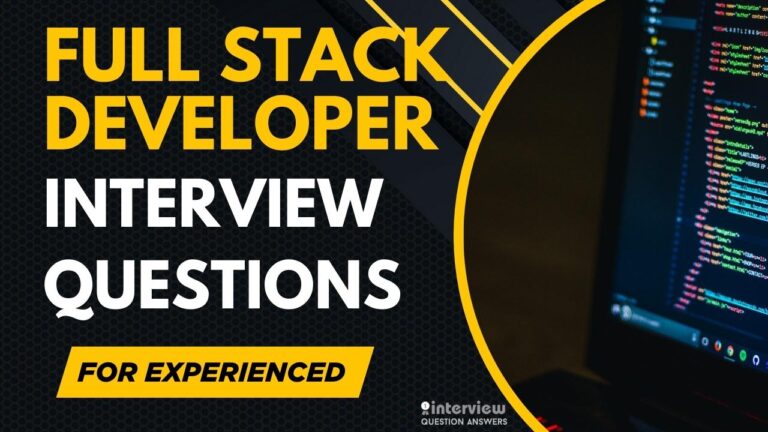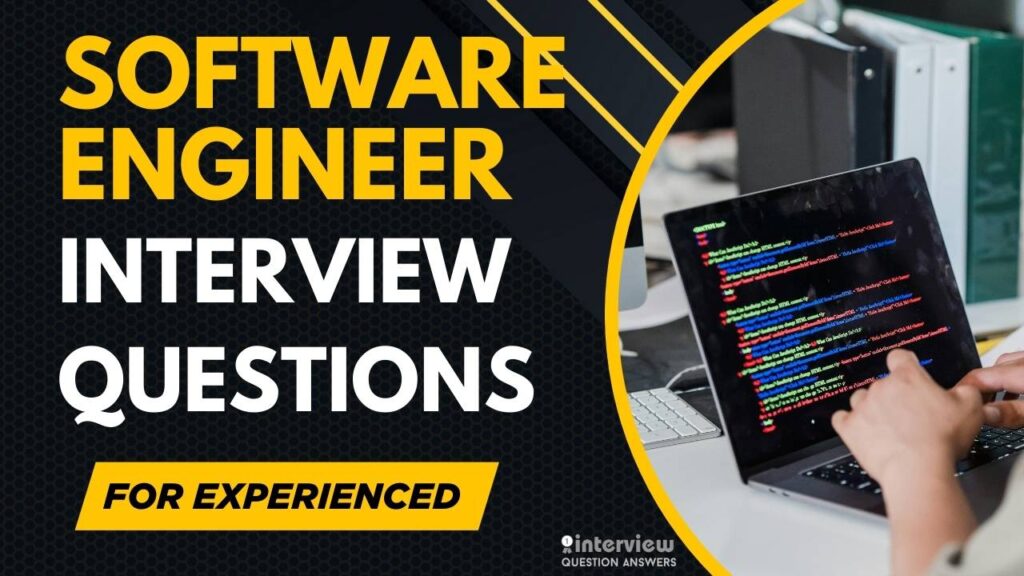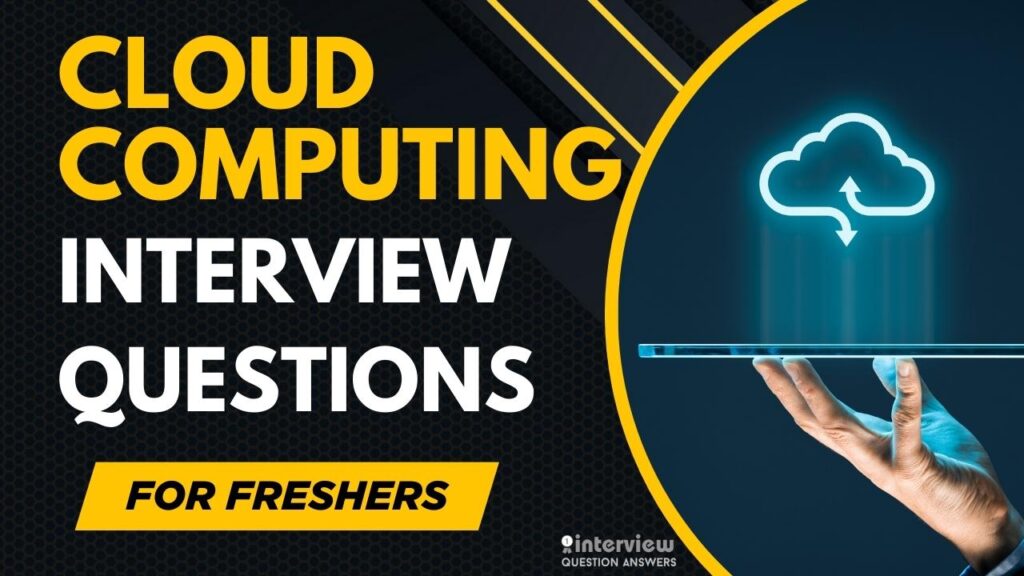Top 50 Solution Architect Interview Questions for Experienced
Solution Architect Interview Questions for Experienced professionals focus on advanced system design skills, business strategy alignment, and technical leadership abilities that senior architects need to show. Getting promoted to senior solution architect roles means you must prove how you create effective technical solutions and manage complex projects across different teams.
This interview guide covers Solution Architect Interview Questions for Experienced architects who have built enterprise systems, including topics like system integration planning, technology selection processes, stakeholder communication, and project delivery management. These Solution Architect Interview Questions for Experienced candidates will help you explain your design thinking, share examples of successful architecture projects, and demonstrate your ability to lead technical initiatives in large organizations.
You can also check this detailed guide: Solution Architect Interview Questions and Answers PDF
Table of Contents
Solution Architect Interview Questions for 2 Years Experience
Que 1. How do you align a solution architecture with business requirements?
Answer:
Engage stakeholders to gather requirements through interviews and workshops. Create use cases, validate with prototypes, and use frameworks like TOGAF to ensure the architecture supports business goals like scalability or cost-efficiency.
Que 2. What factors do you consider when choosing between cloud providers for a solution?
Answer:
Evaluate cost, service offerings (e.g., compute, AI), compliance (e.g., GDPR), global presence, and integration capabilities. Compare AWS, Azure, and GCP based on project needs, such as serverless or database support.
Que 3. How do you design a solution for high availability?
Answer:
Deploy across multiple availability zones, use load balancers (e.g., AWS ELB), and replicate data with services like AWS RDS Multi-AZ. Implement health checks and failover mechanisms to ensure uptime.
# RDS Multi-AZ
DBInstance:
Type: AWS::RDS::DBInstance
Properties:
MultiAZ: true
Engine: mysqlQue 4. How do you implement Infrastructure as Code (IaC) in a solution?
Answer:
Use tools like AWS CloudFormation or Terraform to define resources like EC2 instances or S3 buckets. IaC enables automation, version control, and consistent deployments.
# CloudFormation S3 bucket
Resources:
MyBucket:
Type: AWS::S3::Bucket
Properties:
BucketName: my-bucketQue 5. How do you ensure security in a cloud-based solution?
Answer:
Implement encryption (e.g., AWS KMS), IAM roles, VPC security groups, and network ACLs. Monitor with CloudTrail and use WAF for web application protection.
{
"Effect": "Allow",
"Action": "s3:GetObject",
"Resource": "arn:aws:s3:::my-bucket/*"
}Que 6. What is the role of an API gateway in a solution architecture?
Answer:
An API gateway (e.g., AWS API Gateway) manages, secures, and routes API requests, enabling communication between services like microservices or serverless functions.
# API Gateway
RestApi:
Type: AWS::ApiGateway::RestApi
Properties:
Name: MyApiQue 7. How do you design a cost-effective cloud solution?
Answer:
Use serverless services (e.g., AWS Lambda), auto-scaling, and right-sized resources. Leverage cost tools like AWS Cost Explorer or Azure Cost Management to monitor and optimize spending.
# AWS CLI cost analysis
aws ce get-cost-and-usage --time-period Start=2025-09-01,End=2025-09-30Que 8. How do you choose between monolithic and microservices architectures?
Answer:
Choose monoliths for simple apps with small teams, and microservices for complex, scalable systems. Consider factors like team expertise, deployment frequency, and maintenance overhead.
Que 9. What is a content delivery network (CDN), and how does it fit into a solution?
Answer:
A CDN (e.g., AWS CloudFront) caches content at edge locations to reduce latency for global users. It’s used for delivering static assets like images or scripts.
# CloudFront distribution
Distribution:
Type: AWS::CloudFront::Distribution
Properties:
DistributionConfig:
Origins:
- DomainName: my-bucket.s3.amazonaws.comQue 10. How do you implement a serverless architecture in a solution?
Answer:
Use AWS Lambda or Azure Functions for compute, paired with API Gateway and serverless databases like DynamoDB. Monitor cold starts and ensure event-driven workflows.
# AWS Lambda
exports.handler = async (event) => {
return { statusCode: 200, body: JSON.stringify('Processed!') };
};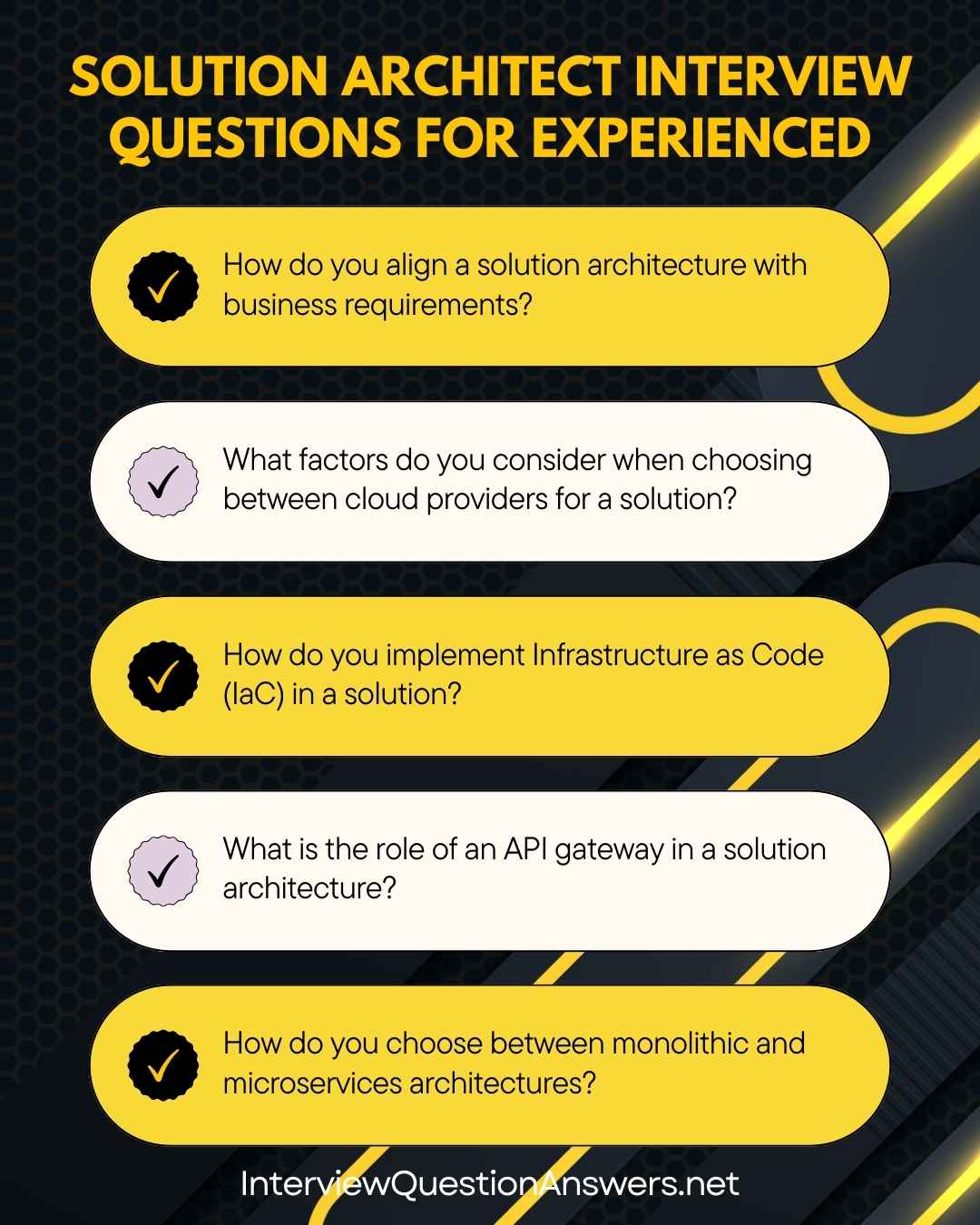
Also Check: Solution Architect Interview Questions for Freshers
Solution Architect Interview Questions for 3 Years Experience
Que 11. How do you ensure scalability in a solution design?
Answer:
Design with auto-scaling (e.g., AWS Auto Scaling), stateless applications, and distributed databases like DynamoDB. Use load balancers to handle traffic spikes.
# AWS Auto Scaling
AutoScalingGroup:
Type: AWS::AutoScaling::AutoScalingGroup
Properties:
MinSize: 2
MaxSize: 10Que 12. How do you handle data storage in a cloud solution?
Answer:
Select storage based on use case: S3 for object storage, EBS for block storage, or RDS for relational data. Ensure encryption and backups for durability.
# S3 bucket with encryption
MyBucket:
Type: AWS::S3::Bucket
Properties:
BucketEncryption:
ServerSideEncryptionConfiguration:
- ServerSideEncryptionByDefault:
SSEAlgorithm: AES256Que 13. How do you monitor a cloud-based solution?
Answer:
Use tools like AWS CloudWatch, Azure Monitor, or GCP Operations Suite to track metrics (e.g., CPU, latency), logs, and set alerts for proactive issue detection.
# CloudWatch metric
aws cloudwatch put-metric-data --metric-name Latency --namespace MyApp --value 120Que 14. How do you design a solution for disaster recovery?
Answer:
Implement multi-region backups with AWS Backup or Azure Site Recovery. Use S3 Cross-Region Replication and test failover plans to ensure data availability.
# S3 Cross-Region Replication
ReplicationConfiguration:
Rules:
- Destination:
Bucket: arn:aws:s3:::destination-bucket
Status: EnabledQue 15. How do you integrate a cloud solution with legacy systems?
Answer:
Use hybrid cloud solutions like AWS Direct Connect or Azure ExpressRoute for secure connectivity. Implement APIs or message queues (e.g., SQS) for data integration.
# AWS Direct Connect
Connection:
Type: AWS::DirectConnect::Connection
Properties:
Bandwidth: 1GbpsQue 16. What is the role of a load balancer in a solution architecture?
Answer:
A load balancer distributes traffic across multiple servers to ensure availability and performance. For example, AWS ELB routes requests to healthy EC2 instances.
# AWS ELB
LoadBalancer:
Type: AWS::ElasticLoadBalancingV2::LoadBalancer
Properties:
Subnets: [subnet-1, subnet-2]Que 17. How do you document a solution architecture?
Answer:
Create architecture diagrams with tools like Lucidchart, including components, data flows, and dependencies. Document decisions, trade-offs, and configurations in a solution design document.
Que 18. How do you ensure a solution is maintainable?
Answer:
Use modular designs (e.g., microservices), IaC (e.g., CloudFormation), and automate deployments with CI/CD pipelines. Monitor with CloudWatch to simplify maintenance.
Que 19. How do you handle performance optimization in a cloud solution?
Answer:
Optimize with caching (e.g., CloudFront, Redis), auto-scaling, and efficient database queries. Use tools like AWS X-Ray to identify and resolve performance bottlenecks.
# X-Ray tracing
aws xray put-trace-segments --trace-segment-documents file://trace.jsonQue 20. How do you communicate complex technical solutions to non-technical stakeholders?
Answer:
Use simple diagrams, avoid technical jargon, and focus on business benefits like cost savings or scalability. Present high-level overviews and use analogies to explain concepts clearly.
Solution Architect Interview Questions for 5 Years Experience
Que 21. How do you design a multi-region cloud solution for global scalability?
Answer:
Use AWS Route 53 for latency-based routing, replicate data with S3 Cross-Region Replication or DynamoDB Global Tables, and deploy across multiple regions with load balancers (e.g., AWS ELB). Monitor performance with CloudWatch and ensure failover with health checks.
# Route 53 latency-based routing
HostedZone:
Type: AWS::Route53::RecordSet
Properties:
Type: A
LatencyRoutingPolicy:
Region: us-east-1
ResourceRecords: [my-app.us-east-1.amazonaws.com]Que 22. How do you implement zero-downtime deployments in a cloud solution?
Answer:
Use blue-green deployments or canary releases with AWS ECS or Kubernetes. Implement rolling updates, feature flags (e.g., LaunchDarkly), and health checks to ensure seamless transitions. Automate with CI/CD pipelines like AWS CodePipeline.
# ECS rolling update
Service:
Type: AWS::ECS::Service
Properties:
DeploymentConfiguration:
MaximumPercent: 200
MinimumHealthyPercent: 100Que 23. How do you secure a cloud-based solution against advanced threats like DDoS?
Answer:
Use AWS Shield or Cloudflare for DDoS protection, implement WAF for web apps, and encrypt data with KMS. Restrict access with IAM roles and monitor with CloudTrail for audit logs.
# AWS WAF configuration
WebACL:
Type: AWS::WAFv2::WebACL
Properties:
Scope: REGIONAL
Rules:
- Name: BlockBadBots
Priority: 1
Statement:
ByteMatchStatement:
SearchString: "bad-bot"Que 24. How do you optimize a solution for cost-efficiency at scale?
Answer:
Analyze usage with AWS Cost Explorer or Azure Cost Management. Use serverless services (e.g., Lambda), auto-scaling, and reserved instances. Tag resources for cost allocation and decommission unused assets.
# AWS CLI cost analysis
aws ce get-cost-and-usage --time-period Start=2025-09-01,End=2025-09-30 --granularity MONTHLYQue 25. How do you design an event-driven architecture in a cloud solution?
Answer:
Use AWS EventBridge or Azure Event Grid to trigger actions (e.g., Lambda functions) based on events like S3 uploads. Ensure idempotency, error handling, and monitoring with CloudWatch.
# EventBridge rule
Rule:
Type: AWS::Events::Rule
Properties:
EventPattern:
source: ["aws.s3"]
detail-type: ["Object Created"]
Targets:
- Arn: !GetAtt MyLambdaFunction.ArnQue 26. How do you implement a microservices architecture in a cloud solution?
Answer:
Deploy microservices with containers (e.g., AWS ECS, Kubernetes) or serverless functions. Use API Gateway for routing, service discovery with Consul, and monitor with Prometheus for scalability.
# ECS service
Service:
Type: AWS::ECS::Service
Properties:
Cluster: MyCluster
TaskDefinition: MyTask
DesiredCount: 3Que 27. How do you ensure compliance with regulations like GDPR in a solution?
Answer:
Use encryption (e.g., AWS KMS), enforce data residency with region-specific deployments, and audit with AWS Config or Azure Policy. Anonymize sensitive data and document compliance processes.
# AWS Config rule
ConfigRule:
Type: AWS::Config::ConfigRule
Properties:
Source:
Owner: AWS
SourceIdentifier: S3_BUCKET_SERVER_SIDE_ENCRYPTION_ENABLEDQue 28. How do you handle data migration to the cloud with minimal downtime?
Answer:
Use AWS Database Migration Service (DMS) or Azure Data Factory for incremental replication. Validate schema compatibility, test migration, and ensure data integrity to minimize downtime.
# AWS DMS replication task
ReplicationTask:
Type: AWS::DMS::ReplicationTask
Properties:
SourceEndpointArn: !Ref SourceEndpoint
TargetEndpointArn: !Ref TargetEndpointQue 29. How do you implement monitoring and observability in a solution?
Answer:
Use AWS CloudWatch, Azure Application Insights, or GCP Monitoring for metrics and logs. Implement distributed tracing with AWS X-Ray and set up dashboards for real-time insights.
# X-Ray tracing
aws xray put-trace-segments --trace-segment-documents file://trace.jsonQue 30. How do you design a solution for real-time data processing?
Answer:
Use streaming services like AWS Kinesis or Azure Event Hubs to process data in real time. Trigger Lambda functions for processing and store results in DynamoDB or BigQuery.
# Kinesis stream
Stream:
Type: AWS::Kinesis::Stream
Properties:
ShardCount: 2Solution Architect Interview Questions for 7 Years Experience
Que 31. How do you manage secrets in a cloud-based solution?
Answer:
Use AWS Secrets Manager or Azure Key Vault for secure storage and rotation of secrets. Access via IAM roles and audit with CloudTrail to ensure security.
// AWS Secrets Manager
const AWS = require('aws-sdk');
const secretsManager = new AWS.SecretsManager();
const secret = await secretsManager.getSecretValue({ SecretId: 'my-secret' }).promise();Que 32. How do you implement a CI/CD pipeline in a cloud solution?
Answer:
Use AWS CodePipeline, Azure DevOps, or GitHub Actions to automate testing, building, and deployment. Integrate with IaC tools like Terraform for infrastructure updates.
# AWS CodePipeline
Pipeline:
Type: AWS::CodePipeline::Pipeline
Properties:
Stages:
- Name: Build
Actions:
- Name: BuildAction
ActionTypeId:
Category: Build
Provider: CodeBuildQue 33. How do you design a solution for multi-tenancy in the cloud?
Answer:
Isolate tenant data with separate schemas or databases (e.g., AWS RDS). Use IAM roles or VPCs for access control and monitor usage with CloudWatch for resource allocation.
# RDS for multi-tenancy
DBInstance:
Type: AWS::RDS::DBInstance
Properties:
DBName: tenant1
Engine: postgresQue 34. How do you integrate a cloud solution with on-premises systems?
Answer:
Use hybrid cloud solutions like AWS Direct Connect or Azure ExpressRoute for secure connectivity. Implement APIs or message queues (e.g., SQS) for data integration.
# AWS Direct Connect
Connection:
Type: AWS::DirectConnect::Connection
Properties:
Bandwidth: 1GbpsQue 35. How do you optimize a solution for low latency?
Answer:
Use edge computing (e.g., AWS Lambda@Edge), cache with CloudFront or Redis, and optimize database queries with indexing. Deploy to multiple regions and monitor with X-Ray.
// Lambda@Edge
exports.handler = async (event) => {
const request = event.Records[0].cf.request;
return request;
};Que 36. How do you ensure disaster recovery in a cloud solution?
Answer:
Implement multi-region backups with AWS Backup or Azure Site Recovery. Use S3 Cross-Region Replication and test failover plans to ensure data availability.
# S3 Cross-Region Replication
ReplicationConfiguration:
Rules:
- Destination:
Bucket: arn:aws:s3:::destination-bucket
Status: EnabledQue 37. How do you design a solution for a microservices-based API?
Answer:
Use an API gateway (e.g., AWS API Gateway) for routing, authentication, and rate limiting. Deploy microservices with ECS or Kubernetes and monitor with Prometheus.
# API Gateway
RestApi:
Type: AWS::ApiGateway::RestApi
Properties:
Name: MyApiQue 38. How do you handle performance bottlenecks in a cloud solution?
Answer:
Identify bottlenecks with AWS X-Ray or Azure Application Insights. Optimize with caching (e.g., ElastiCache), auto-scaling, and efficient database queries.
# X-Ray tracing
aws xray put-trace-segments --trace-segment-documents file://trace.jsonQue 39. How do you document a complex solution architecture for stakeholders?
Answer:
Create detailed diagrams with Lucidchart or Visio, including components, data flows, and dependencies. Document decisions and trade-offs in a solution design document for technical and non-technical audiences.
Que 40. How do you balance scalability, cost, and performance in a solution?
Answer:
Prioritize requirements, use serverless or auto-scaling for scalability, and optimize costs with reserved instances. Monitor performance with CloudWatch and adjust based on metrics to balance trade-offs.
Solution Architect Interview Questions for 10 Years Experience
Que 41. How do you architect a globally distributed, fault-tolerant solution for millions of users?
Answer:
Design a multi-region architecture using AWS Route 53 for latency-based routing, DynamoDB Global Tables for data replication, and Kubernetes (EKS) for container orchestration. Implement circuit breakers, health checks, and monitoring with Prometheus/Grafana to ensure fault tolerance. Use CDN (CloudFront) for low-latency content delivery.
# Route 53 latency-based routing
HostedZone:
Type: AWS::Route53::RecordSet
Properties:
Type: A
LatencyRoutingPolicy:
Region: us-east-1
ResourceRecords: [my-app.us-east-1.amazonaws.com]Que 42. How do you implement zero-downtime deployments for a large-scale cloud solution?
Answer:
Use blue-green deployments or canary releases with Kubernetes or AWS ECS. Leverage feature flags (e.g., LaunchDarkly), rolling updates, and automated rollbacks via CI/CD pipelines (e.g., AWS CodePipeline). Monitor with CloudWatch to ensure seamless transitions.
# ECS rolling update
Service:
Type: AWS::ECS::Service
Properties:
DeploymentConfiguration:
MaximumPercent: 200
MinimumHealthyPercent: 100Que 43. How do you secure a cloud solution against advanced threats like DDoS and data breaches?
Answer:
Mitigate DDoS with AWS Shield or Cloudflare, implement WAF for web apps, and encrypt data with KMS. Use IAM roles for least privilege, enable VPC endpoint policies, and monitor with CloudTrail/GuardDuty for anomaly detection.
# AWS WAF configuration
WebACL:
Type: AWS::WAFv2::WebACL
Properties:
Scope: REGIONAL
Rules:
- Name: BlockBadBots
Priority: 1
Statement:
ByteMatchStatement:
SearchString: "bad-bot"Que 44. How do you optimize a cloud solution for ultra-low latency across global regions?
Answer:
Use edge computing with AWS Lambda@Edge or CloudFront Functions, cache with ElastiCache or CloudFront, and optimize database queries with indexing. Deploy to multiple regions and use tools like AWS X-Ray for latency analysis.
// Lambda@Edge function
exports.handler = async (event) => {
const request = event.Records[0].cf.request;
request.headers['x-custom-header'] = [{ key: 'x-custom-header', value: 'value' }];
return request;
};Que 45. How do you design a serverless microservices architecture for a complex application?
Answer:
Use AWS Lambda for compute, API Gateway for routing, and DynamoDB or Aurora Serverless for data. Orchestrate workflows with Step Functions, implement circuit breakers, and monitor cold starts with CloudWatch.
# Step Functions state machine
StateMachine:
Type: AWS::StepFunctions::StateMachine
Properties:
DefinitionString: !Sub |
{
"StartAt": "Process",
"States": {
"Process": {
"Type": "Task",
"Resource": "${MyLambdaFunction.Arn}",
"End": true
}
}
}Que 46. How do you ensure compliance with regulations like GDPR or HIPAA in a cloud solution?
Answer:
Enforce encryption with AWS KMS or Azure Key Vault, ensure data residency with region-specific deployments, and audit with AWS Config or Azure Policy. Implement data anonymization and access controls, and validate compliance with tools like AWS Trusted Advisor.
# AWS Config compliance rule
ConfigRule:
Type: AWS::Config::ConfigRule
Properties:
Source:
Owner: AWS
SourceIdentifier: RDS_STORAGE_ENCRYPTEDQue 47. How do you implement real-time data processing in a cloud-native solution?
Answer:
Use AWS Kinesis, Azure Event Hubs, or GCP Pub/Sub for streaming data. Trigger Lambda or Cloud Functions for processing and store results in DynamoDB or BigQuery. Monitor throughput with CloudWatch.
# Kinesis stream
Stream:
Type: AWS::Kinesis::Stream
Properties:
ShardCount: 2Que 48. How do you design a cost-optimized architecture for an enterprise-scale solution?
Answer:
Analyze usage with AWS Cost Explorer or Azure Cost Management, use serverless services, reserved instances, and auto-scaling. Implement cost allocation tags and decommission unused resources. Use Trusted Advisor for optimization recommendations.
# AWS CLI cost analysis
aws ce get-cost-and-usage --time-period Start=2025-09-01,End=2025-09-30 --granularity MONTHLYQue 49. How do you integrate a cloud solution with on-premises systems for hybrid deployments?
Answer:
Use AWS Direct Connect or Azure ExpressRoute for secure connectivity. Implement hybrid workflows with message queues (e.g., SQS) or APIs, and ensure data consistency with incremental synchronization.
# AWS Direct Connect
Connection:
Type: AWS::DirectConnect::Connection
Properties:
Bandwidth: 1GbpsQue 50. How do you implement end-to-end observability in a cloud-native solution?
Answer:
Use AWS CloudWatch for metrics/logs, X-Ray for distributed tracing, and Prometheus/Grafana for custom dashboards. Set up alerts with SNS or PagerDuty for proactive issue detection and resolution.
# CloudWatch Logs group
LogGroup:
Type: AWS::Logs::LogGroup
Properties:
LogGroupName: MyAppLogsConclusion
The solution architecture field keeps evolving with cloud-native designs, microservices patterns, and digital transformation strategies becoming standard requirements for experienced positions. These Solution Architect Interview Questions for Experienced professionals give you the thorough preparation needed for your next career step, from complex system planning to executive-level decision making. With preparation using these Solution Architect Interview Questions for Experienced and knowledge of current architecture trends, you will be well positioned to land senior solution architect roles.
Similar Interview Guides:

